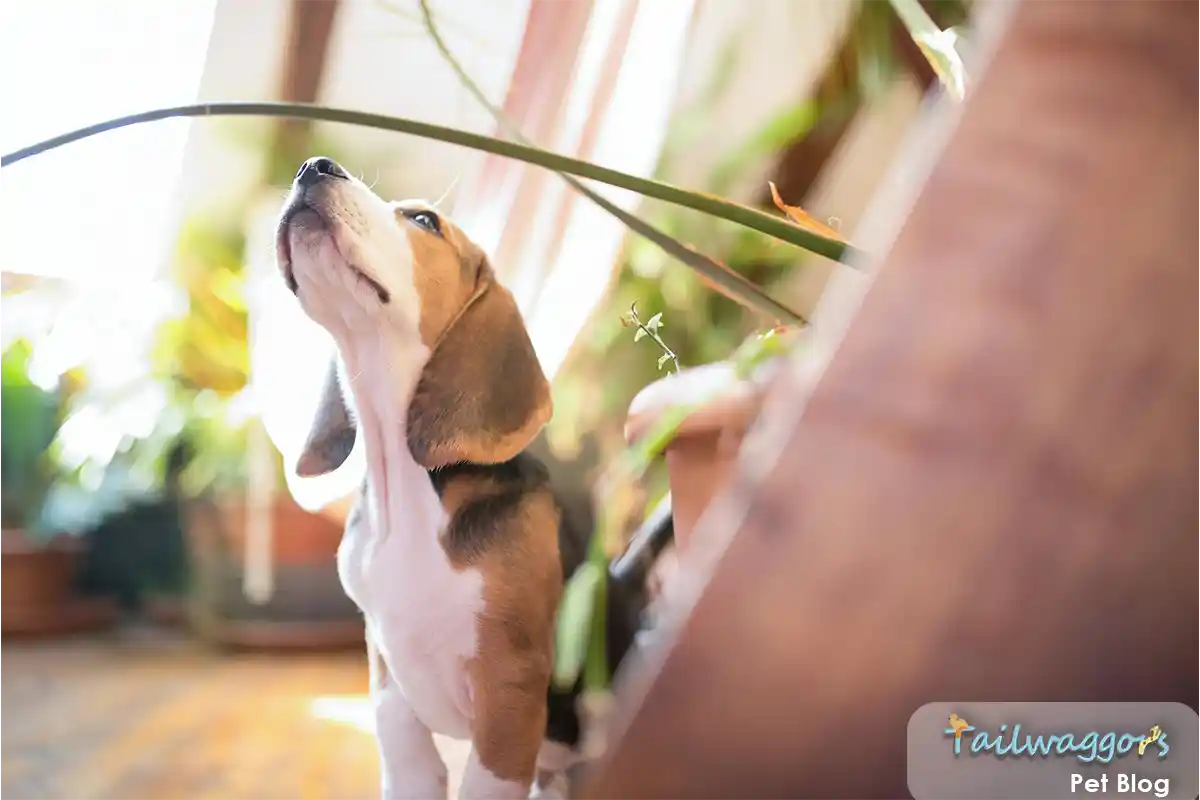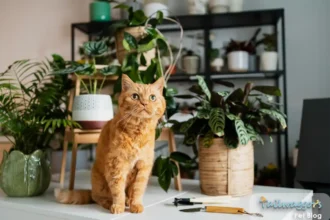Dog Toxic Plants
As pet parents, we all want to create a safe haven for our furry family members. Yet every year, thousands of our beloved dogs face plant-related emergencies – from innocent encounters with backyard blooms to curious explorations of indoor plants. We understand how overwhelming it can feel to navigate the world of toxic plants while trying to maintain a beautiful, pet-friendly home.
Don’t worry – we’ve got your back! Dr. Esther Knoetze, our trusted veterinary expert, has created this comprehensive guide to help you protect your four-legged friend from harmful plants. You’ll discover:
- • Plant Safety Guide: Learn to identify the most dangerous plants for dogs, including common household plants, garden favorites, and seasonal blooms that could pose serious health risks to your furry friend.
- • Safe Space Creation: Discover practical tips for designing pet-friendly indoor and outdoor spaces without sacrificing beauty. Find out which plants are safe alternatives and learn creative ways to keep harmful plants out of reach.
- • Emergency Response: Get step-by-step guidance on what to do if your dog ingests a toxic plant, including immediate actions to take and when to seek veterinary care. Keep this guide handy for quick reference during emergencies.
- • Prevention Strategies: Master proven techniques to protect your dog from plant-related hazards, including training tips, monitoring methods, and practical solutions for maintaining a safe environment year-round.
Think of this guide as your friendly, professional companion in creating a safer environment for your dog. Whether you’re a first-time pet parent or a seasoned dog lover, you’ll find practical solutions and reliable advice to help protect your precious pup from plant-related hazards.
Let’s dive in and learn how to keep those curious paws and sniffing noses safe! 🐾
Understanding Plant Toxicity in Dogs
Dogs are naturally curious explorers who experience the world through their mouths and noses. As opportunistic omnivores, they’re more likely than cats to taste and nibble on plants they encounter. This instinctive behavior, while natural, can lead to dangerous encounters with toxic plants – ranging from mild digestive upset to severe organ damage.
The severity of plant poisoning often depends on several factors unique to your dog:
- Size and weight
- Age and overall health
- Amount of plant material consumed
- Specific part of the plant ingested (roots, leaves, flowers, or seeds)
- Type and concentration of toxins in the plant
Dogs are naturally curious, which makes supervision and prevention key to avoiding plant poisoning incidents,” explains Dr. Tina Wismer, Senior Director at the ASPCA Animal Poison Control Center. “Understanding what makes plants toxic and recognizing warning signs in nature can help prevent accidents.”
Plants often display visible characteristics that can signal their toxicity. Here’s what to watch for:
- 👃 Taste & Smell: Bitter tastes or strong odors often serve as nature’s warning signals
- 💧 Sap Characteristics: Be wary of plants with milky sap or unusual residue on stems/leaves
- 🌵 Physical Features: Exercise caution with spiny, pointed, or sharply serrated leaf edges
- 🌱 Root Systems: Many toxic plants have bulbs, tubers, or extensive rhizome networks
- 🌸 Visual Alerts: Brightly colored berries or flowers can attract dogs but often indicate toxicity
⚠️ Important Safety Note:
Never assume a plant is safe based on appearance alone. When in doubt about a plant’s safety:
- Consult our comprehensive toxic plant database
- Ask your veterinarian
- Contact a local plant expert
- Keep unknown plants out of reach until verified safe
If you notice any of these signs, it’s important to act quickly. Learn more about the 11 Warning Signs You Should Take Your Dog to the Vet.
If your dog’s tongue is hanging out or drooping unusually, it may be a sign of toxicity. Learn more in Why Does Your Dog’s Tongue Stick Out? Here Are 5 Vet-Reviewed Reasons.
Top 19 Toxic Plants for Dogs
As a veterinarian with over nine years of experience treating plant poisoning cases, I’ve seen firsthand how devastating toxic plant exposure can be for our beloved dogs. While countless plants can pose risks, these 19 stand out as particularly dangerous based on their toxicity levels and reported cases from the ASPCA Animal Poison Control Center and Pet Poison Helpline (2023).
“What makes these plants especially concerning is that many are common in homes and gardens, places where dogs should feel safe,” explains Dr. Esther Knoetze, BSc, BVSc. “Understanding their risks and identifying them quickly can mean the difference between a close call and a tragedy.”
How We Ranked These Plants:
- • Severity of toxicity
- • Speed of onset
- • Required amount for poisoning
- • Frequency of reported cases
- • Treatment difficulty
- • Survival rates
Each Plant Guide Includes:
- • Clear identification features
- • Toxicity level assessment
- • Specific toxic components
- • Common symptoms
- • Emergency response steps
- • Location risks (indoor/outdoor)
Critical Note:
Plant toxicity can affect dogs differently based on:
- • Size and weight
- • Age and health status
- • Amount ingested
- • Part of plant consumed
- • Time until treatment
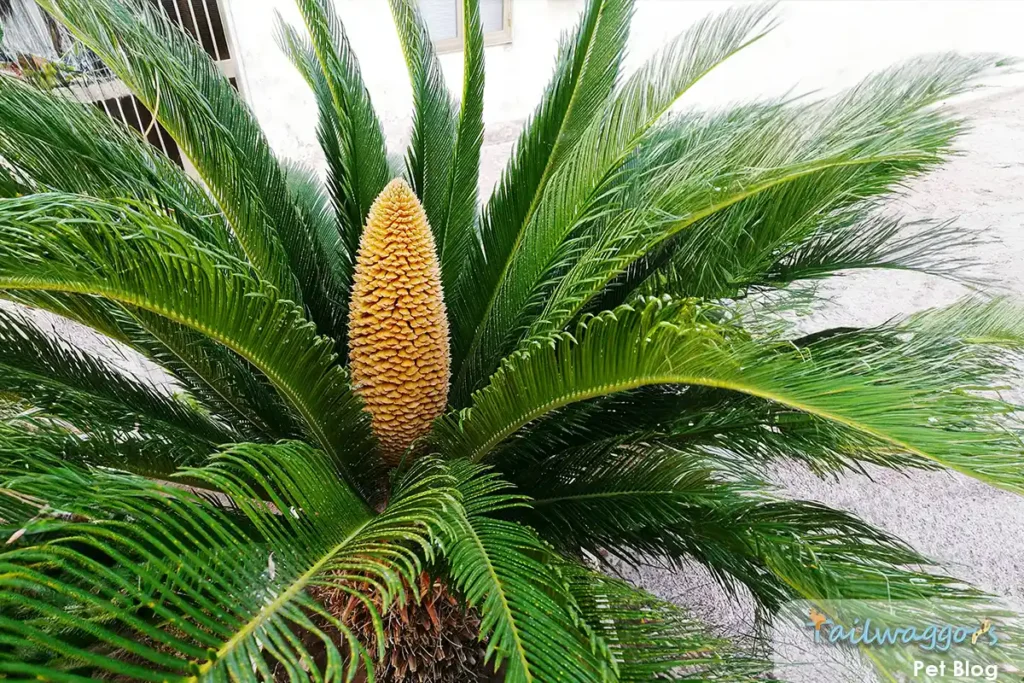
1. Sago Palm (Cycas revoluta) – Lethal at Any Dose
🚨 Toxicity Level: Severe to Fatal All parts of this decorative palm contain cycasin, a toxin that can cause catastrophic liver failure within hours. While the seeds contain the highest concentration, even a small nibble of any part can be lethal.
Identification:
- Feather-like, stiff fronds
- Dark green, circular growth pattern
- Small, cone-like structure in center
- Seeds about the size of large nuts
Danger Zones:
- Indoor decorative pots
- Outdoor landscaping
- Garden centers
- Pool areas
Common Symptoms:
- Initial (within 15 minutes):
- Drooling
- Vomiting
- Lethargy
- Progressive (12-24 hours):
- Jaundice (yellowing of eyes/gums)
- Black, tarry stools
- Bruising
- Abdominal pain
- Liver failure
In my practice, I’ve seen cases where even immediate treatment couldn’t save dogs who ingested sago palm seeds. Prevention is absolutely crucial with this plant.” – Dr. Esther Knoetze, BSc, BVSc
🐾 Tailwaggors Tip:
If you have a sago palm, consider rehoming it to a pet-free environment. No aesthetic value is worth risking your dog’s life.
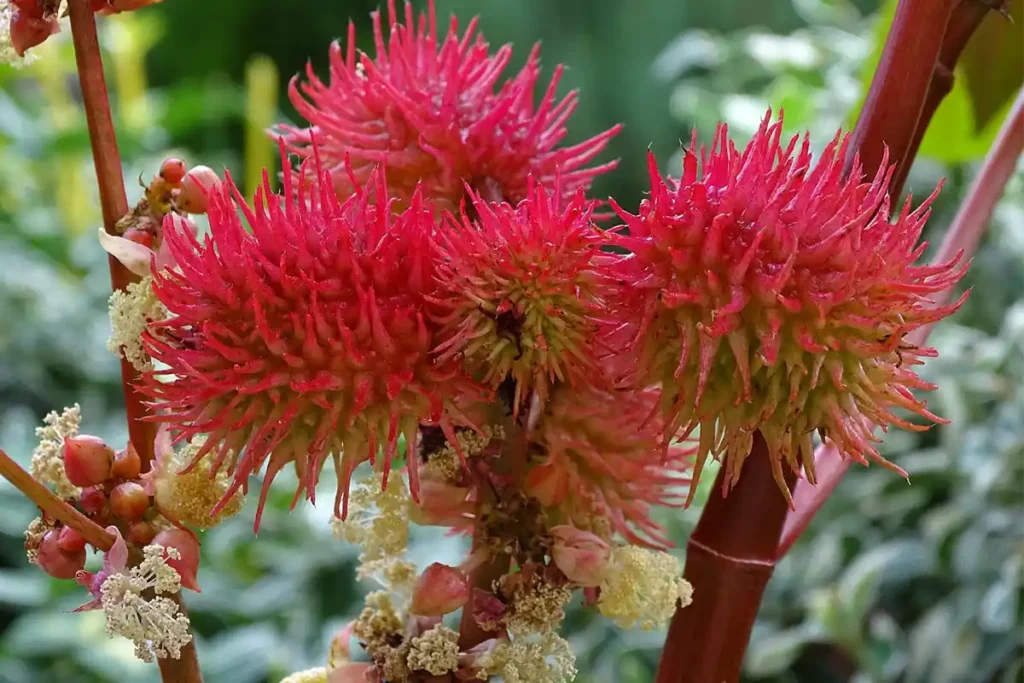
2. Castor Bean Plant (Ricinus communis) – The Hidden Killer
🚨 Toxicity Level: Severe to Fatal Contains ricin, one of nature’s most potent toxins. Just one or two seeds can be lethal to a medium-sized dog. Often found in ornamental gardens due to its striking appearance.
Identification:
- Large, star-shaped leaves
- Spiky seed pods
- Red or green stems
- Height up to 8-10 feet
Risk Areas:
- Public gardens
- Ornamental landscapes
- Wild growing areas
- Decorative borders
Critical Symptoms:
- Immediate (30 minutes-2 hours):
- Severe vomiting
- Bloody diarrhea
- Excessive thirst
- Advanced (4-12 hours):
- Tremors
- Seizures
- Kidney failure
- Collapse
Ricin poisoning is particularly devastating because it can cause irreversible organ damage before obvious symptoms appear. Every minute counts with treatment.” – Dr. Esther Knoetze
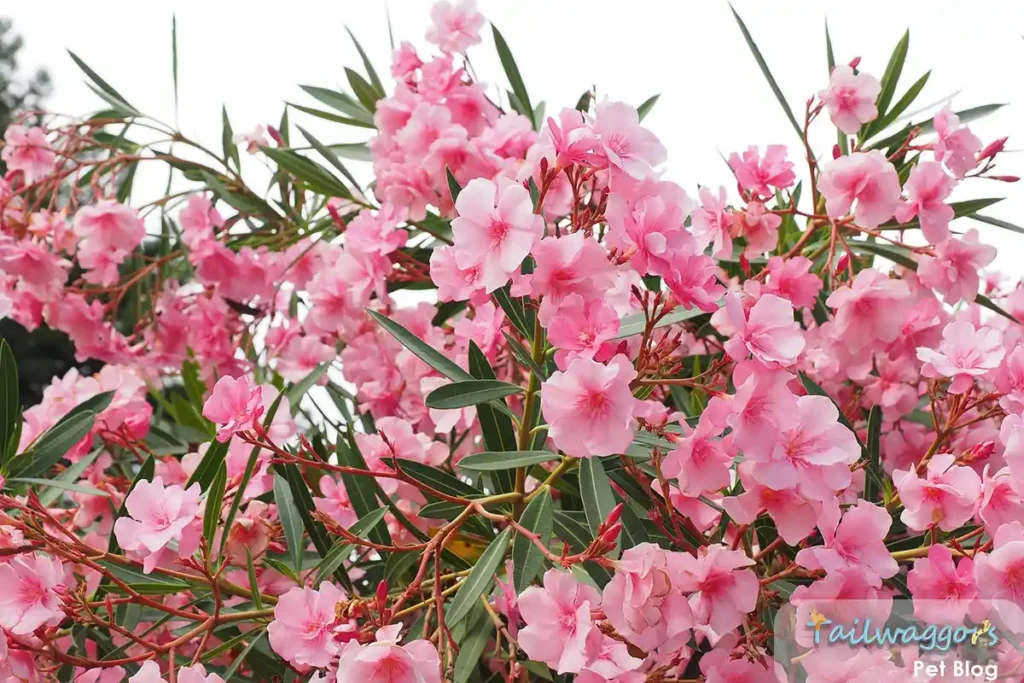
3. Oleander (Nerium oleander) Toxic From Root to Flower
🚨 Toxicity Level: Severe to Fatal Contains cardiac glycosides that directly affect heart function. Even exposure to smoke from burning oleander can be toxic.
Identification:
- Long, narrow leaves
- Dense, clustered growth
- Pink, white, or red flowers
- Thick, woody stems
Common Locations:
- Garden hedges
- Highway medians
- Decorative landscapes
- Container plantings
Critical Symptoms:
- Early Signs (2-4 hours):
- Excessive drooling
- Severe vomiting
- Diarrhea
- Cardiac Signs (4-12 hours):
- Irregular heartbeat
- Weakness
- Collapse
Oleander toxicity can be particularly deceptive because symptoms may appear to improve briefly before sudden cardiac complications develop.” – Dr. Knoetze

4. Autumn Crocus (Colchicum autumnale) The Seasonal Threat
🚨 Toxicity Level: Severe to Fatal Contains colchicine, which disrupts cell division and can cause multi-organ failure.
Identification:
- Purple-pink flowers
- Appears in fall
- No leaves when flowering
- Bulb-like corm
Exposure Risks:
- Garden beds
- Wild areas
- Flower gardens
- Naturalized areas
Progressive Symptoms:
- Initial (2-6 hours):
- Drooling
- Vomiting
- Bloody diarrhea
- Advanced (24-48 hours):
- Organ failure
- Respiratory difficulty
- Shock
With autumn crocus poisoning, the delayed onset of severe symptoms often means owners wait too long to seek treatment. Any suspected exposure should be treated as an emergency.” – Dr. Knoetze
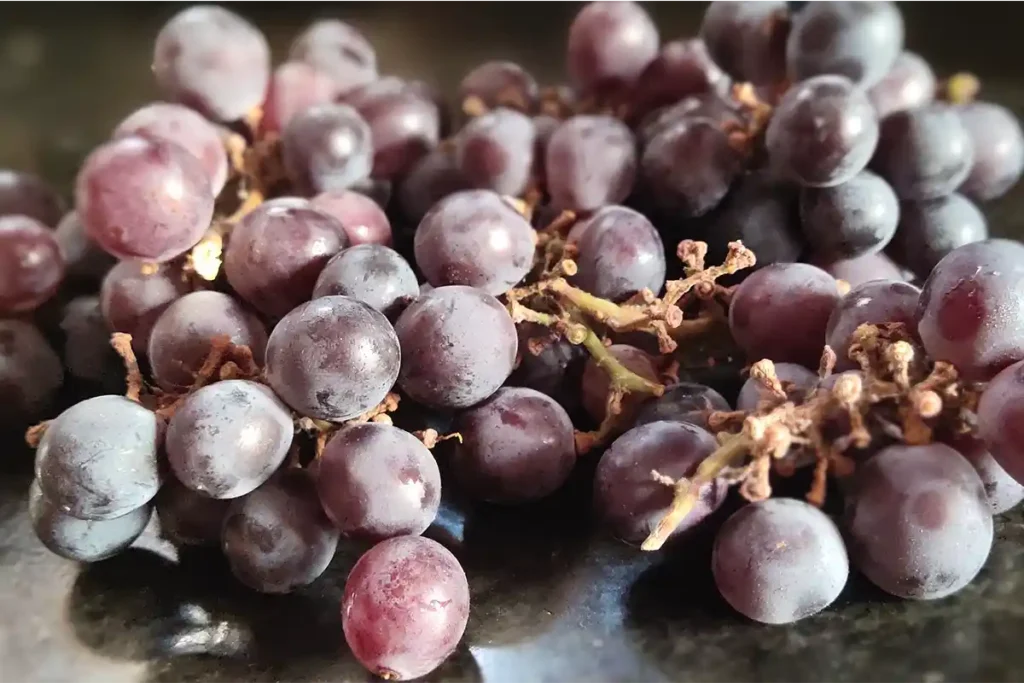
5. Grapes and Raisins (Vitis vinifera) – An Everyday Danger
🚨 Toxicity Level: Severe Uniquely toxic to dogs, even small amounts can cause acute kidney failure. The exact toxic compound remains unknown.
Identification:
- Fresh grapes (all varieties)
- Dried raisins and currants
- Wild grape vines
- Any grape-derived products
Risk Locations:
- Kitchen counters
- Packed lunches
- Snack foods
- Garden areas
Critical Symptoms:
- Early Signs (6-12 hours):
- Vomiting
- Excessive thirst
- Lethargy
- Kidney Signs (24-72 hours):
- Reduced urination
- Abdominal pain
- Depression
The challenging aspect of grape toxicity is its unpredictability. Some dogs may eat grapes once with no effect, then suffer severe kidney damage the next time.” – Dr. Knoetze
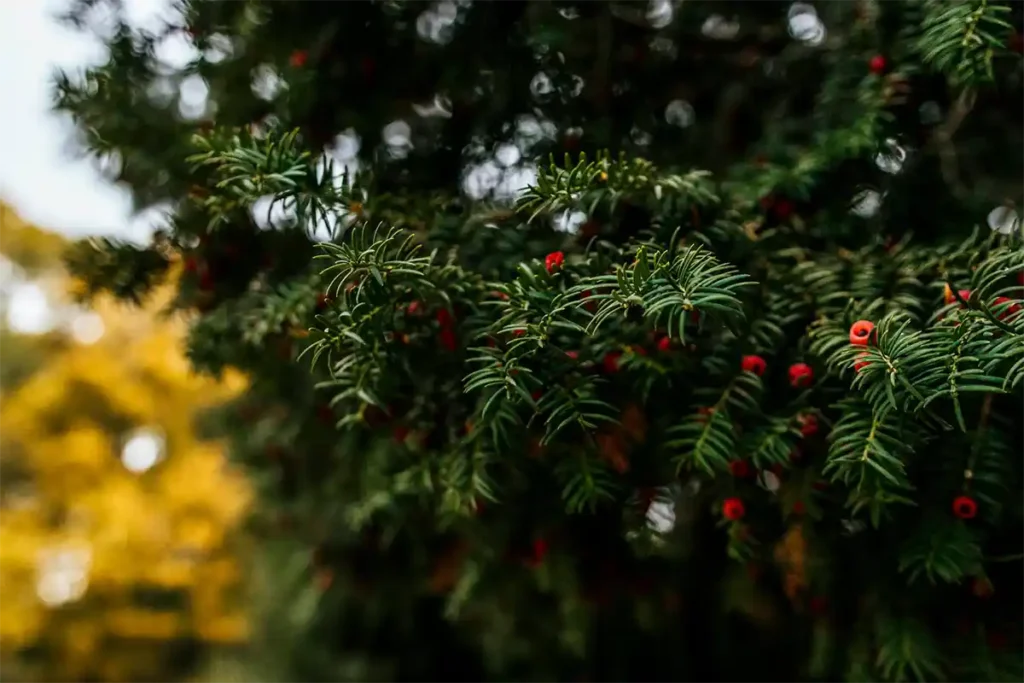
6. Yew (Taxus spp.) – The Silent Killer
🚨 Toxicity Level: Severe Contains taxines that cause rapid cardiac failure. All parts except the red berry flesh are toxic.
Identification:
- Dark green needles
- Red berry-like fruits
- Evergreen shrub/tree
- Brown flaky bark
Common Locations:
- Gardens
- Cemeteries
- Hedges
- Landscaping
Emergency Symptoms:
- Rapid Onset (30 mins-2 hours):
- Trembling
- Difficulty breathing
- Collapse
- Often fatal before symptoms appear
Yew poisoning is particularly dangerous because death can occur so quickly that owners don’t have time to seek treatment. Prevention is absolutely critical.” – Dr. Knoetze
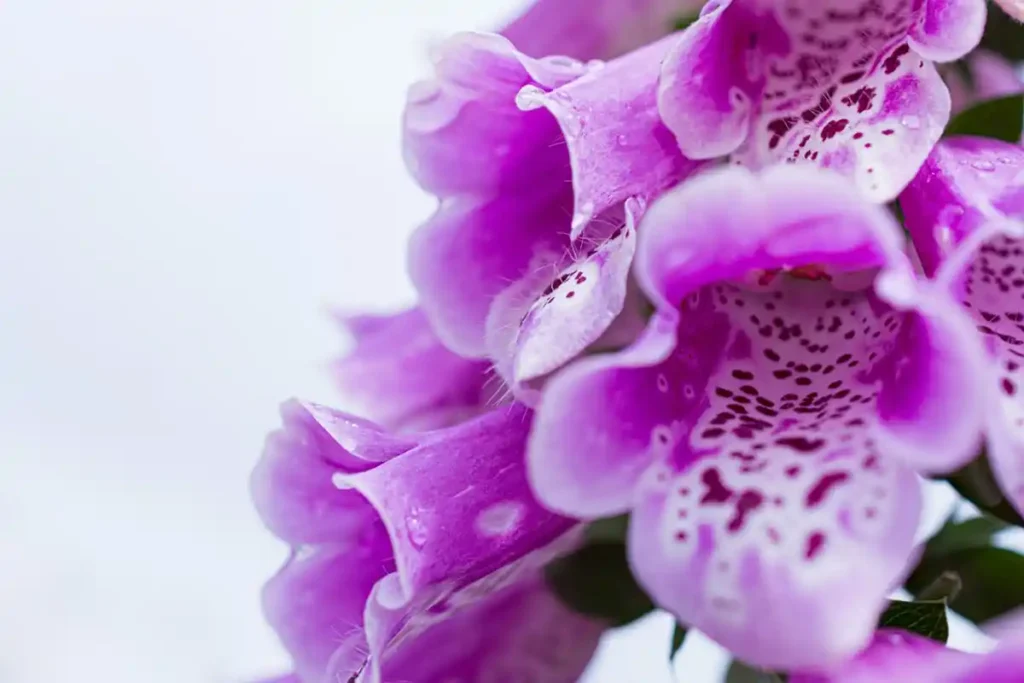
7. Foxglove (Digitalis purpurea) – The Heart Stopper
🚨 Toxicity Level: Severe Contains cardiac glycosides (digitalis) that severely affect heart rhythm.
Identification:
- Tall flower spikes
- Purple-pink spotted flowers
- Large fuzzy leaves
- Grows 2-5 feet tall
Exposure Areas:
- Cottage gardens
- Wild areas
- Flower beds
- Naturalized settings
Severe Symptoms:
- Initial (2-6 hours):
- Vomiting
- Drooling
- Weakness
- Critical (6-12 hours):
- Abnormal heart rhythm
- Collapse
- Seizures

8. Azaleas and Rhododendrons (Rhododendron spp.) – Beautiful but Dangerous
🚨 Toxicity Level: High Contains grayanotoxins affecting nerve and cardiac function. All parts are toxic.
Identification:
- Evergreen shrubs
- Clusters of flowers
- Leathery leaves
- Dense branching
Common Locations:
- Foundation plantings
- Shade gardens
- Woodland areas
- Decorative borders
Progressive Symptoms:
- Early Signs (1-3 hours):
- Excessive drooling
- Vomiting
- Diarrhea
- Advanced (6-12 hours):
- Heart arrhythmias
- Weakness
- Seizures
Even a few leaves can cause serious symptoms. Most cases I’ve treated involved dogs exploring landscaping or garden debris.” – Dr. Knoetze
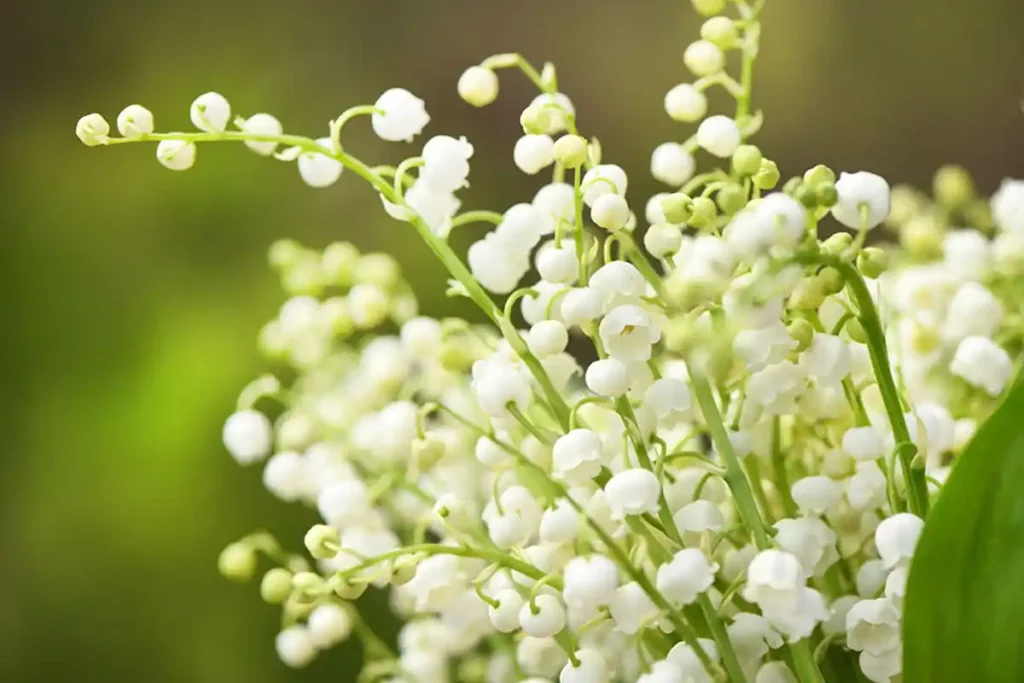
9. Lily of the Valley (Convallaria majalis) – Deceptively Dangerous
Contains cardiac glycosides similar to digitalis, affecting heart function.
Identification:
- Small white bell flowers
- Broad green leaves
- Low-growing
- Sweet fragrance
Risk Areas:
- Shade gardens
- Ground cover
- Cut flower arrangements
- Wild areas
Critical Symptoms:
- Initial (4-6 hours):
- Vomiting
- Diarrhea
- Lethargy
- Severe (12-24 hours):
- Heart rhythm problems
- Low blood pressure
- Disorientation
The sweet scent can attract dogs, making this plant particularly risky in accessible garden areas.” – Dr. Knoetze
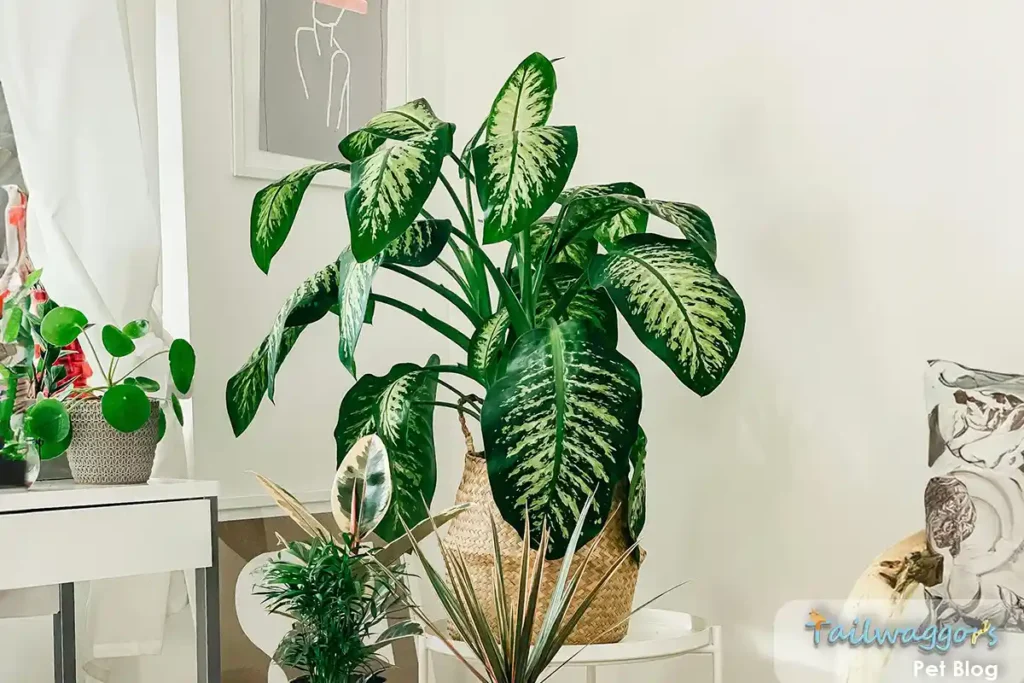
10. Dieffenbachia (Dumb Cane) – The Mouth Burner
🚨 Toxicity Level: Moderate to Severe Contains insoluble calcium oxalate crystals causing intense oral irritation.
Identification:
- Large, variegated leaves
- Thick stems
- Indoor plant
- Various leaf patterns
Common Locations:
- Indoor spaces
- Offices
- Patios
- Sunrooms
Immediate Symptoms:
- Rapid Onset (minutes):
- Intense oral pain
- Drooling
- Swelling
- Secondary Effects:
- Difficulty swallowing
- Voice loss
- Vomiting

11. Tulips and Hyacinths (Tulipa and Hyacinthus spp.) – Spring Hazards
🚨 Toxicity Level: Moderate Highest concentration of toxins in bulbs; contains tulipalin A and B.
Identification:
- Spring flowering bulbs
- Cup-shaped flowers
- Strappy leaves
- Underground bulbs
Risk Areas:
- Spring gardens
- Flower beds
- Forced indoor bulbs
- Garden storage
Common Symptoms:
- Oral/Digestive (1-2 hours):
- Drooling
- Vomiting
- Diarrhea
- General (2-24 hours):
- Abdominal pain
- Depression
- Loss of appetite
Most serious cases occur when dogs dig up and eat stored bulbs or freshly planted ones. The bulbs contain the highest concentration of toxins.” – Dr. Knoetze
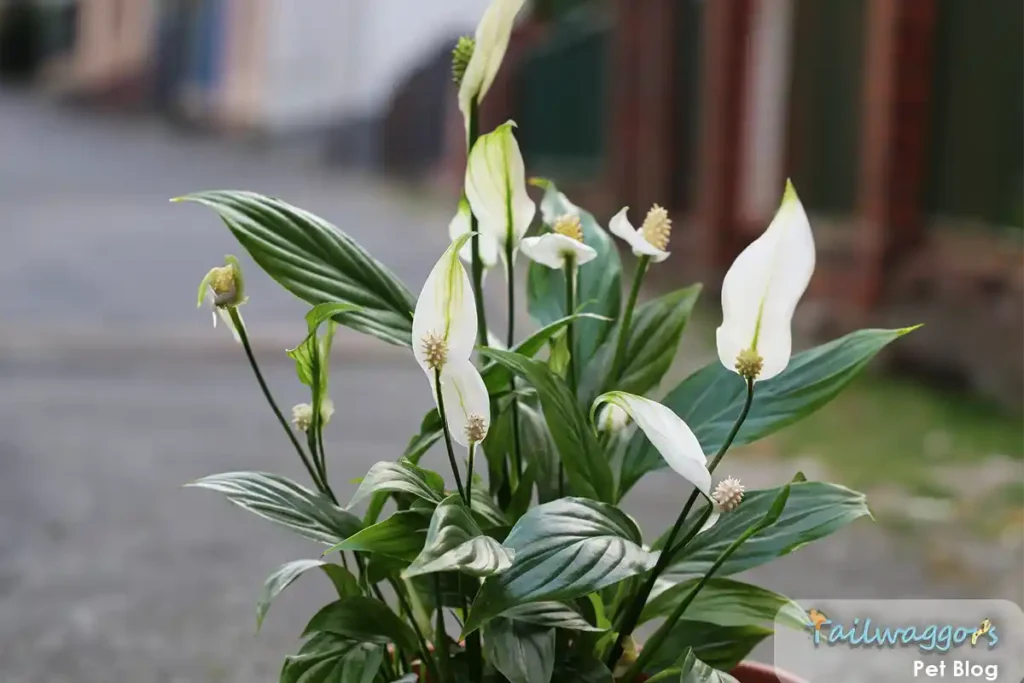
12. Peace Lily (Spathiphyllum spp.) – Common Indoor Threat
🚨 Toxicity Level: Moderate Contains calcium oxalates causing immediate oral irritation.
Identification:
- White spadix flowers
- Dark green leaves
- Indoor plant
- Glossy foliage
Typical Locations:
- Living rooms
- Offices
- Bathrooms
- Low-light areas
Immediate Symptoms:
- Oral Reactions (minutes):
- Burning sensation
- Drooling
- Pawing at mouth
- Secondary Effects:
- Difficulty swallowing
- Vomiting
- Decreased appetite
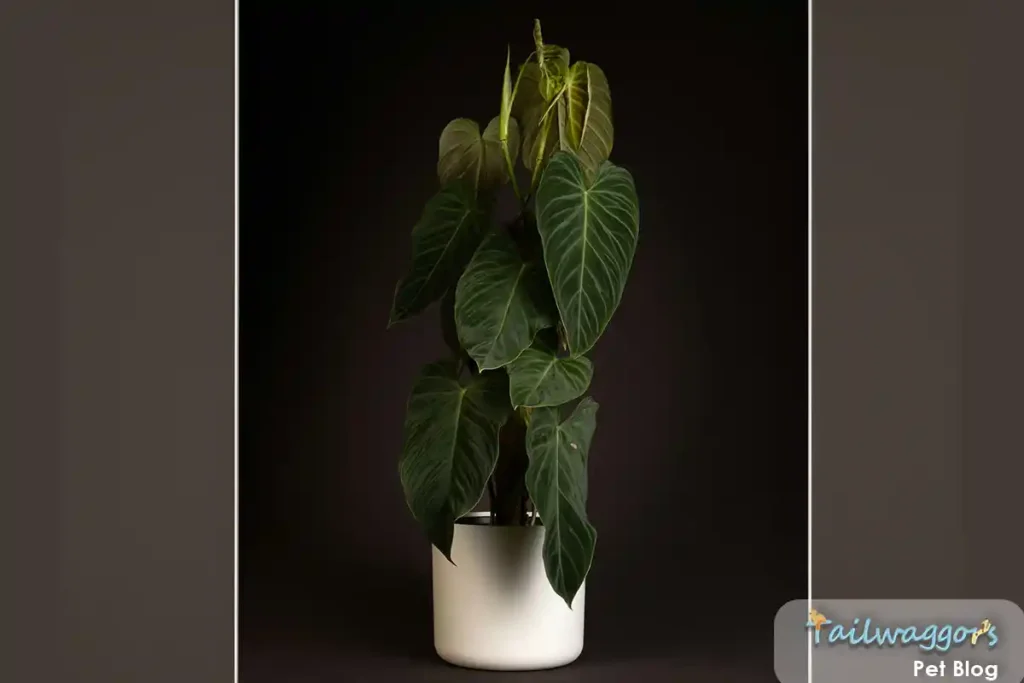
13. Philodendron (Philodendron spp.) – Popular but Poisonous
🚨 Toxicity Level: Moderate Contains insoluble calcium oxalates similar to peace lily.
Identification:
- Heart-shaped leaves
- Climbing or trailing
- Aerial roots
- Various leaf patterns
Common Locations:
- Indoor plantings
- Hanging baskets
- Office spaces
- Enclosed porches
Quick-Onset Symptoms:
- Immediate (minutes):
- Oral irritation
- Intense drooling
- Swelling of tongue
- Progressive:
- Vomiting
- Difficulty swallowing
- Decreased appetite
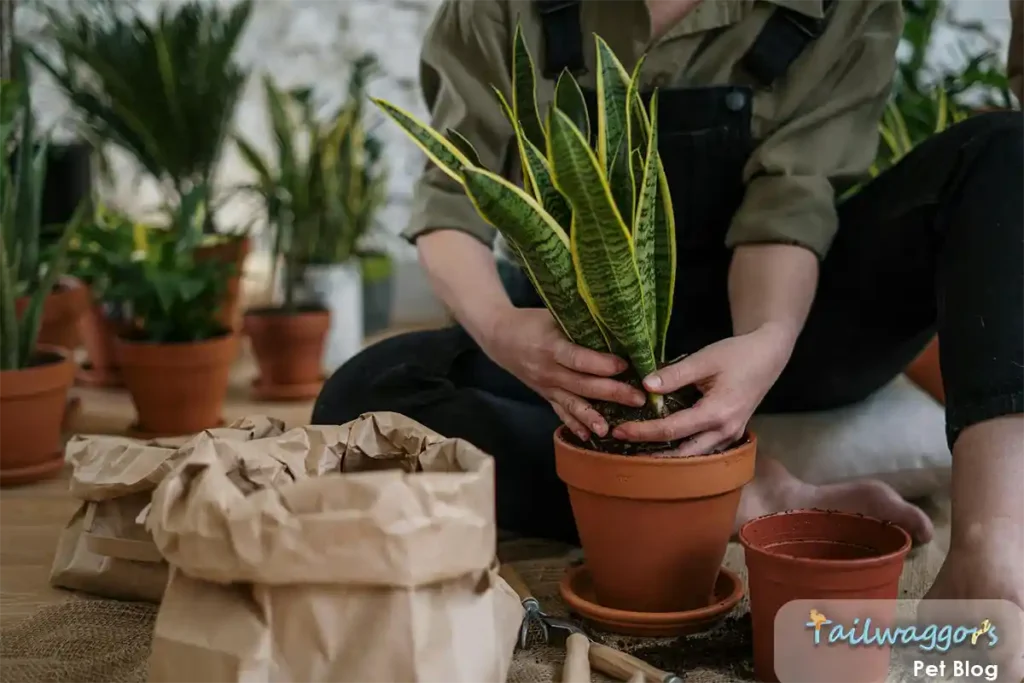
14. Snake Plant (Sansevieria trifasciata) – Hidden Indoor Danger
🚨 Toxicity Level: Moderate Contains saponins causing digestive upset and lethargy.
Identification:
- Upright, sword-shaped leaves
- Dark green with yellow edges
- Thick, succulent leaves
- Various height varieties
Common Locations:
- Indoor corners
- Low-light areas
- Office spaces
- Bathrooms
Notable Symptoms:
- Early Signs (2-4 hours):
- Nausea
- Vomiting
- Excessive drooling
- Secondary:
- Diarrhea
- Lethargy
- Loss of appetite
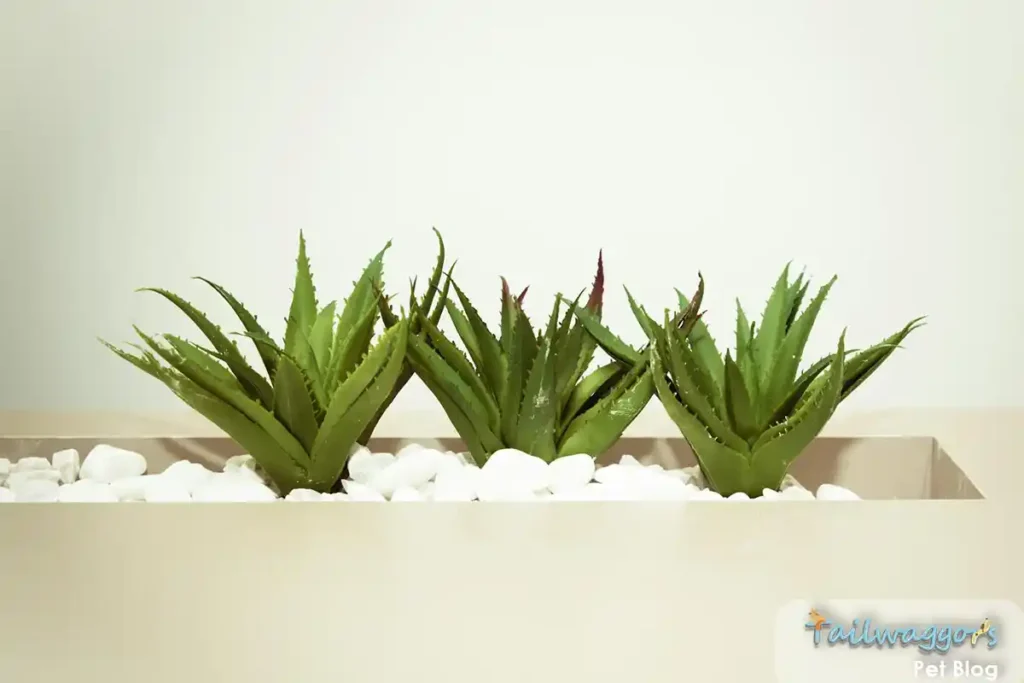
15. Aloe Vera (Aloe barbadensis miller) – Medicinal but Dangerous
🚨 Toxicity Level: Moderate Outer plant contains aloin, toxic to dogs. Note: Inner gel is non-toxic.
Identification:
- Thick, spiky leaves
- Gray-green color
- Rosette growth pattern
- Clear gel inside
Typical Locations:
- Window sills
- Kitchen areas
- Garden beds
- Container gardens
Progressive Symptoms:
- Initial (2-6 hours):
- Vomiting
- Diarrhea
- Lethargy
- Secondary:
- Tremors
- Depression
- Anorexia
While aloe’s inner gel is safe for external use on dogs, the outer plant parts contain compounds that can cause significant digestive upset.” – Dr. Knoetze
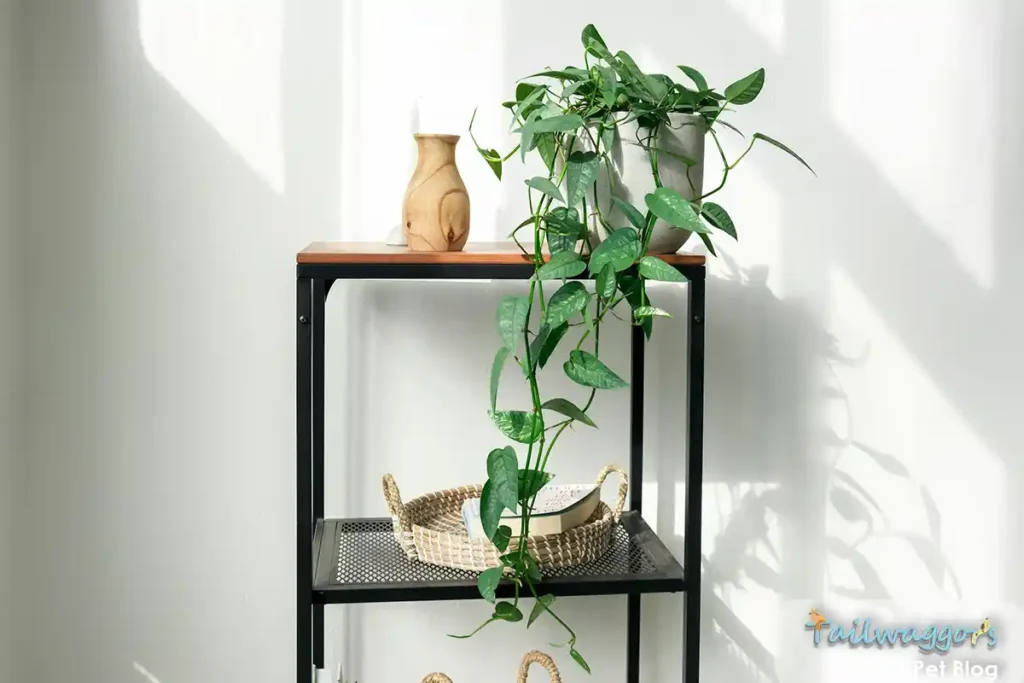
16. Pothos (Epipremnum aureum) – Common but Toxic
🚨 Toxicity Level: Mild to Moderate Contains insoluble calcium oxalates causing immediate discomfort.
Identification:
- Heart-shaped leaves
- Trailing vines
- Variegated patterns
- Aerial roots
Risk Areas:
- Hanging baskets
- Shelves
- Office spaces
- Window sills
Rapid Symptoms:
- Immediate (minutes):
- Oral irritation
- Drooling
- Pawing at mouth
- Following:
- Vomiting
- Swelling
- Difficulty swallowing

17. Daffodils (Narcissus spp.) – Spring Time Danger
🚨 Toxicity Level: Moderate Contains lycorine and other alkaloids, with highest concentration in bulbs.
Identification:
- Yellow or white flowers
- Trumpet-shaped blooms
- Strappy leaves
- Underground bulbs
Common Locations:
- Spring gardens
- Naturalized areas
- Flower beds
- Stored bulbs
Distinct Symptoms:
- Initial (1-3 hours):
- Vomiting
- Diarrhea
- Abdominal pain
- Advanced:
- Heart arrhythmias
- Tremors
- Low blood pressure
Most severe cases occur when dogs dig up and consume bulbs. Even small amounts can cause significant gastrointestinal upset.” – Dr. Knoetze
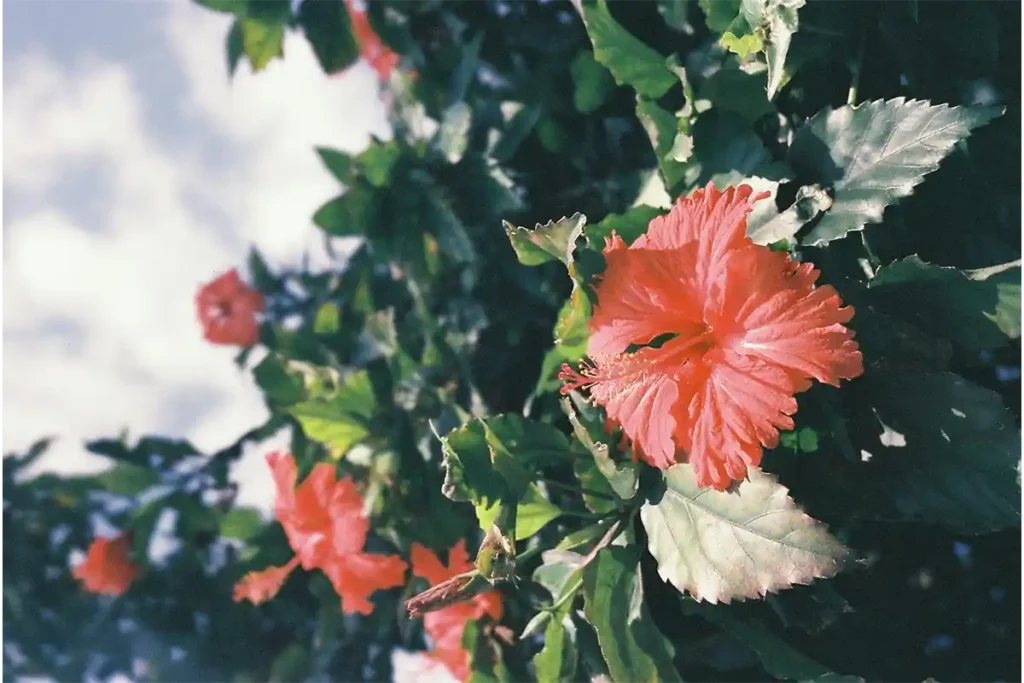
18. Hibiscus (Hibiscus spp.) – Mild but Common
🚨 Toxicity Level: Mild Contains irritants that can cause digestive upset.
Identification:
- Large, showy flowers
- Glossy leaves
- Bushy growth
- Multiple varieties
Risk Areas:
- Gardens
- Patios
- Container plants
- Indoor spaces
Common Symptoms:
- Mild (1-2 hours):
- Vomiting
- Diarrhea
- Drooling
- Usually self-limiting
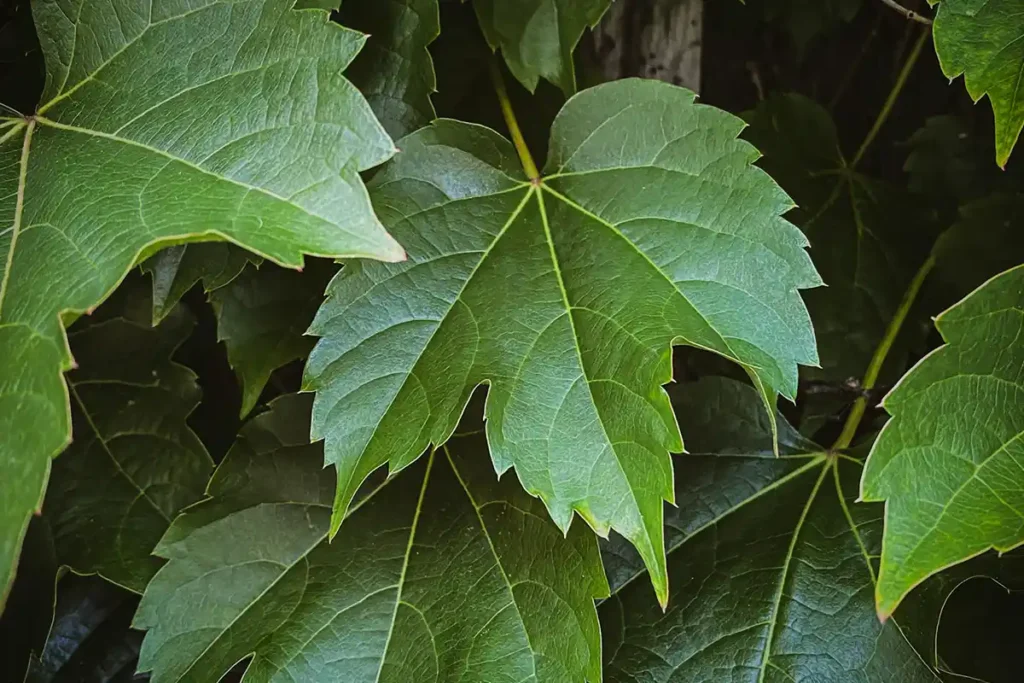
19. Boston Ivy (Parthenocissus tricuspidata) – Climbing Hazard
🚨 Toxicity Level: Mild Contains calcium oxalate crystals and other irritants.
Identification:
- Three-pointed leaves
- Climbing vine
- Fall red color
- Small blue berries
Common Locations:
- Building walls
- Fences
- Ground cover
- Garden structures
Typical Symptoms:
- Quick Onset (1-2 hours):
- Vomiting
- Diarrhea
- Decreased appetite
- Generally mild and self-limiting
While these last few plants are classified as mild in toxicity, any plant ingestion should be monitored and veterinary care sought if symptoms persist or worsen. Always err on the side of caution with suspected plant poisoning.” – Dr. Knoetze
Important Note: This list includes plants ranked by their toxicity to dogs based on veterinary reports and expert resources. Always consult with a veterinarian or the ASPCA Animal Poison Control Center if you suspect your dog has ingested a toxic plant.
Other Toxic Plant Families
Beyond our top 19 most dangerous plants, several entire plant families can pose risks to your dog. As a veterinarian, I’ve found that understanding these plant families helps pet parents make safer choices for their gardens and homes.
Knowing plant families is like having a safety roadmap,” explains Dr. Esther Knoetze, BSc, BVSc. “When you recognize one toxic member of a family, you can be more cautious with its relatives.”
Common Toxic Plant Families
⚠️ Severe Risk Families
Fabaceae (Legume Family)
-
•
Notable Members: Castor Bean, Wisteria
-
•
Key Toxin: Ricin and lectins
-
•
Danger Level: Potentially fatal
-
•
Time to Symptoms: 12-48 hours
Vitaceae (Grape Family)
-
•
Notable Members: All grape varieties, raisins
-
•
Unique Risk: Causes kidney failure
-
•
Danger Level: Severe at any amount
-
•
Time to Symptoms: 6-24 hours
⚠️ Moderate Risk Families
Araceae (Philodendron Family)
-
•
Notable Members: Philodendron, Monstera, Pothos
-
•
Effects: Mouth and digestive system irritation, drooling, vomiting, swelling
-
•
Key Toxin: Insoluble calcium oxalates
Araliaceae (Ivy Family)
-
•
Notable Members: Ivy, Devil’s Backbone
-
•
Effects: Vomiting, diarrhea, abdominal pain
-
•
Key Toxin: Saponins
Asparagaceae (Hyacinth Family)
-
•
Notable Members: Hyacinths, Tulips
-
•
Effects: Severe digestive upset, vomiting, abdominal pain
-
•
Key Toxin: Alkaloids and glycosides
-
•
Special Note: Bulbs are most toxic
Euphorbiaceae (Spurge Family)
-
•
Notable Members: Poinsettia, Crown of Thorns
-
•
Effects: Mouth, throat, and stomach irritation, skin reactions
-
•
Key Feature: Milky sap that causes irritation
Malvaceae (Mallow Family)
-
•
Notable Members: Hibiscus, Hollyhocks
-
•
Effects: Vomiting, diarrhea, abdominal discomfort
-
•
Note: Severity depends on dog size and amount consumed
🐾 Tailwaggors Tip:
Plants often have multiple common names, which can cause confusion. Always double-check the scientific name when assessing a plant’s safety for your dog.
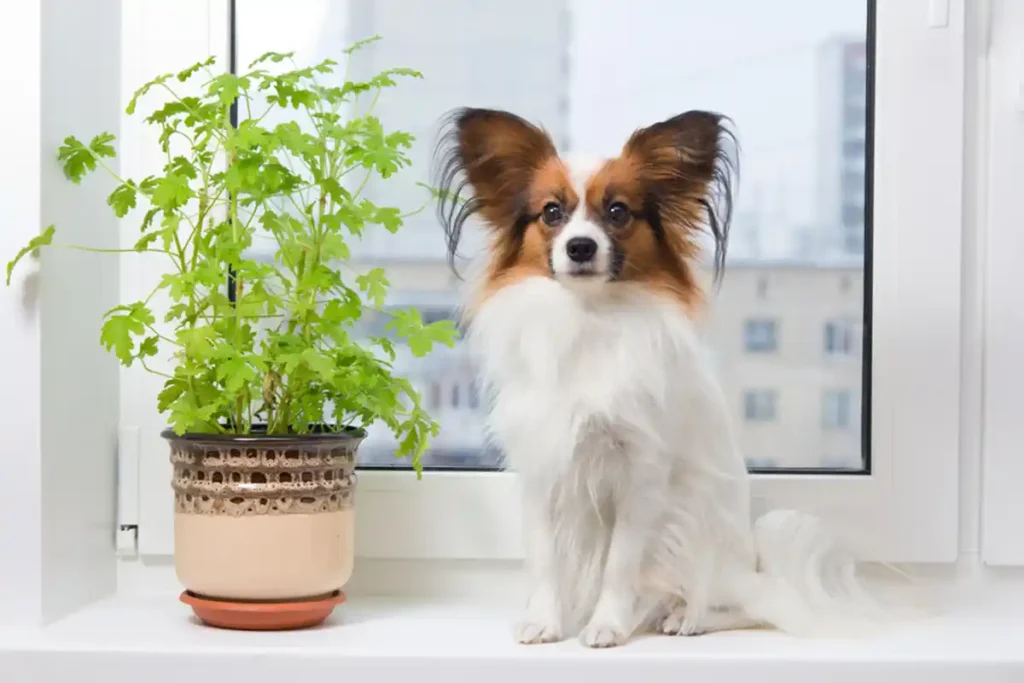
Preventing Plant Poisoning in Dogs
Dogs are naturally curious and often explore the world through their mouths. This behavior, while endearing, increases the risk of accidental plant poisoning. Unlike cats, dogs are more likely to chew on plants out of boredom, playfulness, or hunger. Protecting your furry friend starts with creating a safe and dog-friendly environment.
1. Keep Toxic Plants Out of Reach
- Remove known toxic plants from your home, garden, and yard.
- Use elevated planters, hanging pots, or barriers to limit access to indoor greenery.
- Fence off garden sections that contain hazardous plants like oleander or sago palms.
- Regularly inspect plants for signs of chewing, digging, or disturbance.
- Apply dog-safe bitter sprays to deter nibbling (consult your vet before use).
- Provide safe, engaging alternatives like chew toys, puzzle feeders, or edible plants such as parsley or wheatgrass.
2. Opt for Dog-Safe Plants
Want to keep plants in your home or garden? Choose varieties that are both beautiful and safe for dogs:
- Spider Plants (Chlorophytum comosum): Resilient and air-purifying.
- Boston Ferns (Nephrolepis exaltata): A lush, classic option.
- Areca Palms (Dypsis lutescens): Adds a tropical vibe without risk.
- Parlor Palms (Chamaedorea elegans): Perfect for low-maintenance greenery.
- Prayer Plants (Maranta leuconeura): Stunning foliage and dog-friendly.
Note: Even non-toxic plants can cause mild digestive upset if ingested in large amounts. Ensure all greenery is pesticide- and fertilizer-free.
3. Supervise Outdoor Time
- Keep a close eye on your dog when they’re outdoors, especially in areas with unfamiliar plants.
- Train your dog to respond to commands like “leave it” or “drop it” to prevent ingestion of harmful substances.
- Set up a dog-friendly garden with only safe plants and block access to potentially toxic areas.
4. Designate Dog-Safe Zones
- Create plant-free areas indoors and outdoors where your dog can roam freely without risk.
- Alternatively, build a pet-friendly herb garden with safe options like parsley, wheatgrass, or mint to satisfy their natural curiosity.
5. Educate Yourself and Stay Informed
Regularly update your knowledge about toxic and non-toxic plants by consulting trusted resources like ASPCA’s Animal Poison Control or Tailwaggors’ toxic plant database. Keep the contact information for your veterinarian or a poison control hotline handy for emergencies (e.g., ASPCA Animal Poison Control Center: (888) 426-4435).
If you suspect your dog has ingested a toxic plant, move the plant out of reach and contact your veterinarian or pet poison control hotline immediately. Quick treatment can mean the difference between a minor stomach upset and major organ damage.
Read more on our Veterinarian’s Complete Dog Emergency plan guide to help you prepare and plan ahead.
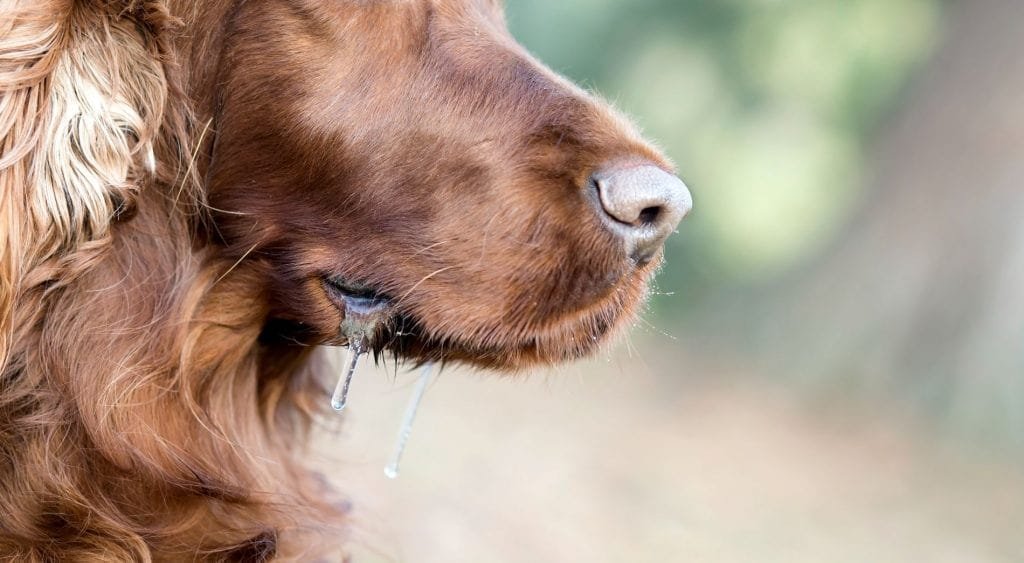
What to Do If Your Dog Ingests a Toxic Plant
Accidents can happen, even in the most dog-proofed homes. If your dog ingests a toxic plant, quick action is critical to prevent severe complications. By recognizing the signs of plant poisoning and following the right steps, you can safeguard your furry friend’s health.
Recognize the Signs of Plant Poisoning
Dogs may show various symptoms depending on the plant type and amount ingested. Be alert for the following:
- Excessive drooling or difficulty swallowing
- Oral irritation, swelling, or ulcers
- Vomiting or diarrhea (may contain plant fragments)
- Difficulty breathing or irregular heart rate
- Lethargy, weakness, or collapse
- Seizures, tremors, or unusual neurological behavior
🚨 Pro Tip:
If your dog exhibits any of these signs, act immediately. Bring a sample or photo of the suspected plant to assist in diagnosis and treatment.
If you notice any of these signs, it’s important to act quickly. Learn more about the 11 Warning Signs You Should Take Your Dog to the Vet.
If your dog’s tongue is hanging out or drooping unusually, it may be a sign of toxicity. Learn more in Why Does Your Dog’s Tongue Stick Out?
Steps to Take Immediately
1. Contact a Professional
- Call your veterinarian or a poison control hotline immediately:
- ASPCA Animal Poison Control Center: (888) 426-4435
- Pet Poison Helpline: (855) 764-7661
- Be prepared to describe:
- Your dog’s symptoms.
- The plant involved.
- How much was ingested (if known).
2. Collect Plant and Evidence
- Take a clear photo or collect a sample of the plant for identification.
- Bring any vomit, stool, or plant fragments to the veterinarian. These can aid in diagnosis.
3. Provide First Aid (If Recommended by a Professional)
- Gently remove any plant debris from your dog’s mouth and fur with a damp cloth.
- If your dog is alert, offer small sips of water to rinse their mouth.
- Do not induce vomiting or administer home remedies unless specifically instructed by a veterinarian or poison control expert. Improper treatment can worsen the situation.
4. Monitor Symptoms
- Keep a close eye on your dog’s behavior, breathing, and heart rate while awaiting veterinary care.
- Note any changes or new symptoms and relay them to your vet promptly.
What to Expect at the Veterinarian
Your vet will perform a thorough physical examination and may recommend diagnostic tests, including:
- Blood work to evaluate organ function and detect toxins.
- Urinalysis to assess kidney involvement.
- Imaging (X-rays or ultrasound) if plant material ingestion is suspected.
- Toxin panels to identify specific chemicals, if applicable.
Treatment Options
Depending on the severity of poisoning, and the amount of plant ingested, treatment may include:
- Inducing vomiting (if safe and appropriate).
- Administering activated charcoal to bind toxins in the stomach.
- IV fluids to maintain hydration and support kidney and liver function.
- Medications for nausea, pain relief, or managing neurological symptoms.
- Specific antidotes for certain toxins, when available.
Emergency Tips for Pet Owners
- Stay Calm: Dogs pick up on stress, so maintaining a calm demeanor can help keep them stable.
- Prepare an Emergency Kit: Include gloves, a soft towel, and your veterinarian’s contact details.
- Know Local Resources: Identify emergency clinics and poison control hotlines in your area before an emergency occurs.
Learn more about Emergency protocols and 5-critical components that make them. Learn more about First Aid for Pets: What Every Pet Owner Should Know.
Preventing Future Poisonings
Prevention is the best cure. These steps can help minimize risks:
- Remove Toxic Plants: Eliminate known toxic plants from your home and garden.
- Research Before Buying: Verify that new plants are dog-safe using resources like the ASPCA Toxic Plant Database or Tailwaggors’ Plant Guide.
- Provide Safe Alternatives: Offer dog-friendly greenery such as wheatgrass, parsley, or mint to satisfy curiosity.
- Supervise Outdoor Time: Use secure fencing or leash walks to prevent your dog from nibbling on harmful plants.
- Educate Your Household: Make sure family members, roommates, and guests are aware of plant risks and how to respond to emergencies.
🐾 Tailwaggors Tip:
Even non-toxic plants can cause mild digestive upset if eaten in large amounts. Focus on providing enrichment like chew toys, puzzle feeders, and interactive play to divert your dog’s attention.
Regular checkups can help detect any long-term effects of plant exposure. Discover why regular checkups are crucial for your pet’s health.
U.S. – based Helpline Resources
- ASPCA Animal Poison Control Center
- 24/7 poison control hotline: (888) 426-4435
- Comprehensive toxic and non-toxic plant list
- Pet Poison Helpline
- 24/7 animal poison control center: (855) 764-7661
- Poisons and toxins library
Frequently Asked Questions: Dog Toxic Plants
1. What are the most dangerous plants for dogs?
+Several common plants can be lethal to dogs if ingested:
- Sago Palm – all parts are toxic, especially the seeds
- Oleander – highly toxic even in small amounts
- Castor Bean Plant – contains ricin, extremely dangerous
- Autumn Crocus – can cause severe poisoning
🩺 Veterinary Insight:
“Even a small amount of these plants can be fatal. If you suspect ingestion, treat it as an emergency and contact your vet immediately.”
2. How can I tell if my dog has eaten a toxic plant?
+Watch for these common symptoms of plant poisoning:
- Sudden vomiting or diarrhea
- Excessive drooling
- Difficulty breathing
- Seizures or tremors
- Lethargy or weakness
🐾 Tailwaggors Tip:
Take photos of all plants in your home and garden. If your dog shows symptoms, these photos can help your vet identify the potential toxin quickly.
3. What should I do if my dog ingests a toxic plant?
+Take immediate action with these steps:
- Remove any remaining plant material from their mouth
- Rinse their mouth with water if possible
- Contact your veterinarian or pet poison control immediately
- Collect a sample of the plant for identification
- Monitor your dog’s symptoms
🩺 Veterinary Insight:
“Never induce vomiting unless specifically instructed by a veterinary professional, as this can sometimes cause more harm than good.”
4. How can I dog-proof my home and garden?
+Create a safe environment with these precautions:
- Remove all known toxic plants from your property
- Keep remaining plants out of reach
- Use physical barriers around garden areas
- Consider raised planters or hanging baskets
- Regularly inspect for fallen leaves or plant debris
🐾 Tailwaggors Tip:
Create a designated “dog garden” area with pet-safe plants where your dog can safely explore and play.
5. Are there dog-safe plants I can use?
+Yes! Many beautiful plants are safe for homes with dogs:
- Spider Plants
- Boston Ferns
- Areca Palms
- Parlor Palms
- African Violets
- Christmas Cactus
🐾 Tailwaggors Tip:
Even with pet-safe plants, it’s best to discourage chewing behavior and monitor your dog’s interaction with any houseplants.
6. Can outdoor plants harm dogs too?
+Yes, many common outdoor plants pose serious risks:
- Oleander – highly toxic to all pets
- Azaleas and Rhododendrons
- Fox Glove
- Lily of the Valley
- Wild Mushrooms
🩺 Veterinary Insight:
“Always supervise your dog in unfamiliar outdoor areas, especially during spring when new plants are growing and flowering.”
Essential Reading for Pet Safety:
- Veterinarian’s Complete Dog Emergency Guide
- Essential Tips for Preventing Pet Poisoning
- 10 Things to Consider for a Pet-Safe Home
Conclusion
Your dog’s safety is our top priority. By learning to identify toxic plants, taking preventative steps, and knowing how to respond in an emergency, you can create a home that’s both beautiful and dog-friendly.
Remember, even non-toxic plants can cause mild upset in large amounts. Prioritize safe enrichment like chew toys, safe plants, and supervised outdoor exploration to satisfy your pup’s natural curiosity.
Your dog’s safety starts with you! Share this guide with fellow dog parents to spread awareness and prevent poisonings.


